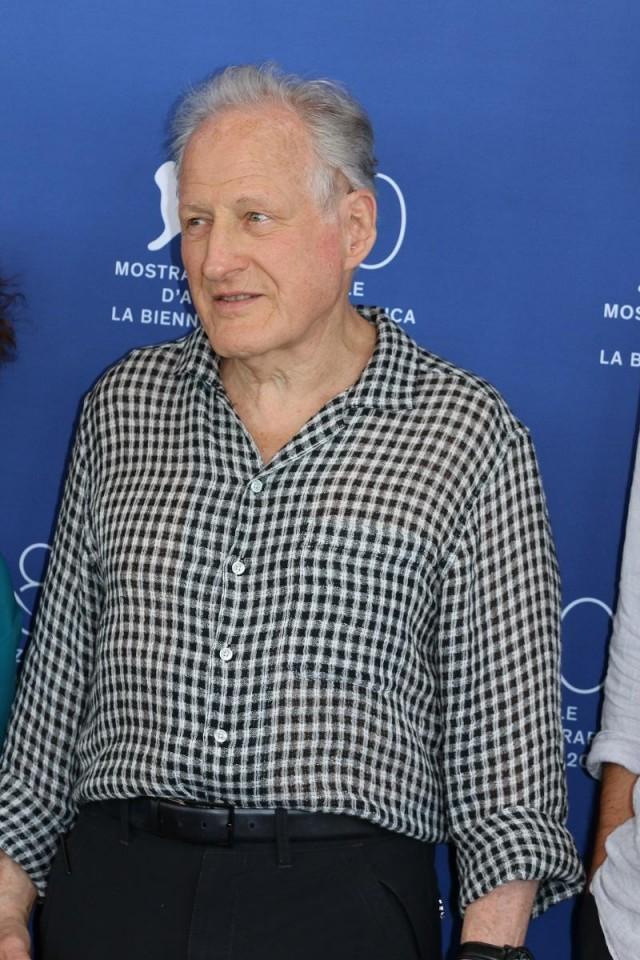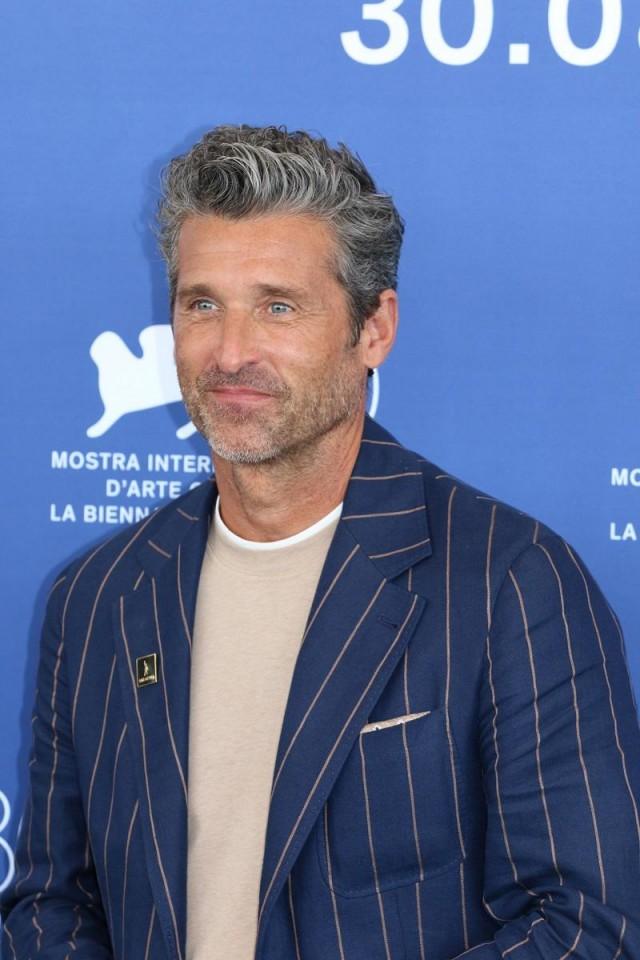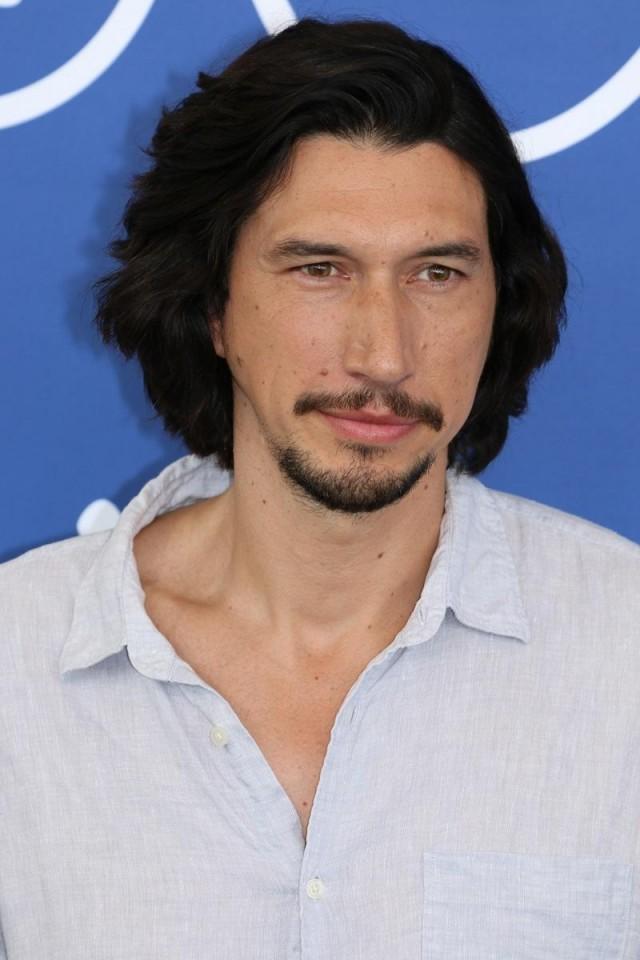Adam Driver, Patrick Dempsey and director Michael Mann talk about 'Ferrari'

It is only after a few minutes that you recognize Adam Driver who inhabits his Enzo Ferrari character so well in the biographical sports thriller of director Michael Mann, "Ferrari."
The exhilarating story unfolds over the three months of 1957 when Ferrari, the Italian sports car magnate, tries to win the Mille Miglia, the 1,500-kilometer motorsport endurance race, as he hangs by a financial thread.
In fact, he realized that in order to survive, he had to sell 400 cars a year, and the only way to do that was to attract an outside investor like Henry Ford II or win the Mille Miglia. As Ferrari himself said, "You win on Sunday, you sell on Monday."
Based on the 1991 biography "Enzo Ferrari: The Man and the Machine" by motorsport journalist Brock Yates, the movie also stars Patrick Dempsey (Piero Taruffi), Penelope Cruz (Enzo's wife Laura Ferrari), Shailene Woodley (Enzo's mistress Lina Lardi), Jack O'Connell (Peter Collins), Daniela Piperno (Enzo's mother Adalgisa Ferrari) among others.
Driver's acting was praised by critics as Vulture wrote, "As Enzo, Adam Driver somehow manages the impossible. Ferrari was 59 years old when the events of this movie took place; the actor is a full 20 years younger. He's got convincing jowls and worry lines, and he absolutely goes to town on the Italian accent.
"You can't take your eyes off him. In the hands of a less confident actor, this could have been a disaster, theatrical and awkward and unreal. But Driver makes Ferrari — this stolid, strapping wall of a man, towering over everyone around him and always commanding our attention — something indelible, a force not so much of nature as steel, asphalt, and death."
As for the car racing in the movie, Guardian wrote, "It has some impressive and deafening race scenes, set in that extraordinary era when there was no safety either for drivers or the crowds behind the straw bales (or behind nothing at all). But it only really comes to life at the moments of pure horror – one death of a driver early on and then later a grotesque tragedy involving nine members of the public, four adults and five children."
Driver, Dempsey, and Mann talked more about the movie during the Q & A at the 80th Venice Film Festival. Below are excerpts.

Michael Mann, I wondered why Enzo Ferrari now in the 21st century to resurrect this lost world, and for Adam Driver and Patrick Dempsey, where was the point that you both committed to say, "Yes, I have to be in this movie and play these characters?"
Michael Mann (MM): Why Enzo Ferrari? Because his story is so profoundly human. When you encounter a character's dynamic as he is, as operatic as he is, the more specifically you get into the man, the deeper the dive, the more universal it becomes. I found that the way so many parts of him are in opposition to each other, and his life kind of resonated with me the way life is. So, either it's melodramatic and profound, or I am in fact as oppositional as he is.
Adam Driver (AD): Michael and I met about something a year before, and always wanted to work with him, obviously. He sent me this, I read the script, and the character was very much what he described. Just the different relationships he had with different people and how everyone would have an opinion about their version of Ferrari. But this one whose internal engine was very much driven by grief and the difference in his relationship with Laura versus Lina Lardi versus his mother at that time, at that moment all seemed like a subject I didn't know much about and seemed daunting and exciting. With Michael being the person who you're doing it for, it seemed like a kind of no-brainer to me.
Patrick Dempsey (PD): I read this script maybe 10, 12 years ago. I was very familiar with the story from the Ken Brock book. This period in motorsport history has always been fascinating to me. As soon as I read it, I was like, this is the best script that I've read in and around the motorsport world, particularly in this era, which I find to be the most romantic and certainly the deadliest. I actively went after this. I just wanted to be a part of it in any capacity.
I was working in London at the time, I just had finished watching the opening Grand Prix last year when Ferrari won. I was like, oh, this could be the year for Ferrari. I wanted to reach out to Michael. So, I sent him an email. "Is it true that the movie's now going?" And he said, "Yes, it is." And then I asked, "Could I come in and have a meeting to discuss?" And we had a discussion, and he thought about it, and I got a call about a month later and he goes, "Would you like to play Piero Taruffi?" And I was like, "Absolutely. I'd be so grateful to be a part of it." And that's how it started.
Michael, Enzo Ferrari had a long career. Why did you choose this moment in his life? It's a very specific moment. It's not a happy, aggrandizing moment, but it's so poignant in many ways.
MM: Because in this one year of 1957, many of the dynamic conflicts that are going on in his life all collide into this particular period of time. The company's going broke. But more importantly, he's just lost his son, Dino. So, he's in a state of grief, and he and Laura's marriage is falling apart and they're both handling grief in two different ways. And there also was (his other son with Lina Lardi) Piero Ferrari.
So, everything about their history and what their future is going to be all are pivoting right now at this particular moment. To answer the earlier question, these conflicts are universal. It happens to all of us in all of our life. So, grief, loss, love, passion, and ambition, are universal things. It's all compressed in the life of Enzo Ferrari in a very melodramatic and operatic way. So that's why it's Ferrari in 1957.
How was it to make the race and the rivalry between Maserati and Ferrari?
MM: I've done a little bit of amateur racing, and the experience of it is such that two things, one is that the focus is so intensely on one singular objective and everything else in your life disappears. That and the sense of if you like agitation. So, I wanted to bring that experience to an audience, as opposed to very elegant graphics, which is also possible. I wanted to bring something of the experience of driving these particular cars in the 1950s. So that influenced everything about how we shot it.
And then the rivalry between Maserati and Ferrari?
MM: The conflict between the two companies, they're both teetering on the edge of bankruptcy for very different reasons. Enzo is a race car driver. All he cares about is the race team. He went from being a driver in the 1920s and he had some moderate success in my imagination, or in fact. Maybe he raced against Nuvolari once or twice and it was enough to convince him you're not a race car driver. He started managing the Alfa Romeo team. So that's his priority, that's his imperative. Everything about the business is only to support the racing.
Maserati is a completely different story. By that point, the Orsis had taken over from the Maserati brothers, and they were trying to run the business. This is 1957. The economic recovery did not happen until 1962, 1963. So, life was difficult, and everything went hand in hand to mouth. So, one or two companies are going to survive. But what I found fascinating about this conflict is that it wasn't just Maserati versus Ferrari. They also had two football teams and two opera companies. You had the commonality and then you had the Storekey. It seems to be a town in which everybody gravitates towards dualities and competition.

Adam and Patrick, what was the feeling of driving the actual cars?
AD: The scariest day on set. They wouldn't let me drive the cars for insurance reasons. As I said before, making a movie is a miracle and they don't want me touching the thing that's the most expensive part on the... I don't drive the cars, except in pre-production we raced Ferrari to get obviously newer Ferraris. I can't afford the other ones. And then at the beginning, I'm not driving that one. It's on a dolly. Again, they don't trust me with small pieces of equipment. Big pieces of equipment like sandwiches, they'll let me handle. But Patrick can more speak to that.
PD: It was quite terrifying actually driving a modern car. You have a roll cage. There was no cage in this car. It was a Caterham chassis, and the same family built all the bodies traditionally. Michael, do you want to tell that story about the cars and how they were built?
MM: The cars started by us taking a three-dimensional LiDAR scan of actual cars. Tonight, you'll see the actual car that Taruffi won the race in will be out there tonight on the red carpet. The real car, not the ones we built. We took that LiDar and put it in that CAD computer program and then custom designed a tubular frame or chassis and then had a cater them four-cylinder twin cam engine driving it. The cars are absolutely perfect replicas of the real Ferraris and Maserati.
PD: We had a sequential gearbox, which was really nice and very quick. The balance of the car was really good, really neutral. As we were doing the racing sequences, certainly the beginning part of the race at night was really quite exhilarating because we kept going faster, faster, faster. The visibility was terrible. I was like, "What am I doing here?" There's no roll cage. This is really frightening.
Then it gives you a much better perspective of what the drivers in that particular era were going through and the risks that they were putting themselves and their fellow competitors in racing that closely. But it was exhilarating. It was really quite exciting. There was one particular kink in this section of road that we were running you couldn't quite see, and to be driving with the stunt drivers and the other racers in this was really exhilarating and fun. You felt like you stepped back in time, which was quite remarkable.
AD: Also, the sense of how dangerous they were to what Patrick is talking about, that seat belts, it wasn't an act of negligence, it just Isn't a part of the culture at the time, in a way where car seats are now and then they weren't in the eighties and nineties. It is just almost, the goal was to be thrown from the car as a safer way of a crash than staying with it is again, a time capsule.
PD: And the fear of fire was a big thing as well.
Michael, in a biopic there's a fine line between honoring a legacy and navigating through the myth, specifically of a person. I was wondering if you could talk a little bit about that journey as you were constructing it.
MM: Biopics to me are linear and belong on the History Channel. So, they're documentaries. I'm not interested in that at all. Making somebody come alive as dynamically operatic and melodramatic as Enzo was in these unique circumstances of Modena, which is like no other place in 1957 in this critical crisis of his life, to me is a drama. It is better than anything I could make, the real story, the real Enzo is better than anything I could make up.
But from everything from his strafing width and his humor, which is there in his writing, which is very good, by the way, to the situations with Lena Lardi and Laura. We did a lot of research and a deep dive into that life, both with Laura's doctor who's still alive, and then with Lena Lardi's niece and finding out everything about the fabric of the culture and the people and the way they thought and dressed and everything they did in this little microcosm of Modena.

Adam, how daunting was it to be around these racing cars? Do you have a new appreciation for these race cars now? Are you intrigued?
AD: Yeah, it was less about understanding how impressive the cars are. It was more interesting to me, the mindset of a racer. It's obvious that the technology in 1957 and Ferrari in particular was way more advanced, and that's resonant now, but the mindset of when we were racing cars in pre-production with Ferraris and open wheel Rebels were basically, essentially a motorcycle engine.
You become painfully aware of what Michael was talking about before. In a way, it's the opposite of escapism. It's an absolute focus on the moment that's happening right now. There's no room for daydreaming or losing focus and attention because it's dangerous. You'll crash, obviously. So, the mindset was helpful in playing the character where there is absolute, he's instinctive, he's impulsive, it's pre-psychology. He's making decisions in a vacuum because he's used to doing them alone. He's built a way of coping with death, and especially with people that he's cared for, not only by his son, but teammates who have died because of the metal that he's made, like he says in the movie.
So, building those guardrails for himself and the mindset of absolute focus and absolute presence was really helpful. So that was the big thing that I had an appreciation for is, and it's hard, Michael would talk about this all the time, it's hard not to get philosophical about an engine, actually. It is true. The number of pieces that have to come together, similar to films, and work on the exact right timing and the exact right moment, and then this missing element of human intuition and reflex, it's a 50/50 marriage and that's very much filmmaking or anything.
The number of things that have to come together for something to operate is beautiful. It also makes you aware of how many things can go wrong at any moment. But when it happens, it's a special thing to be a part of. It's a drivable clock or a moving piece of art. So that part I had never considered before and was a helpful internal engine for the character.
MM: Some of that came from the generosity of the factory, and particularly Gabriele Lalli, who worked in the Classique division, and who demonstrated the inside of a Lampredi V12 to Adam and me. It looks like the inside of a beautiful watch. All these moves in perfect synchronicity at 8,000 RPM are just incredible, particularly given metallurgy in the fifties. But one other thing I'd add is that from driving, one of the other aspects of it is the addiction to the euphoria of it.
That's something that Jean Behra was very literate about. He witnessed the crash, and that's how we know what happened on that chicane in the Autodromo in the beginning. He referred to it as this ridiculous euphoria that we're all addicted to, but that is central to Enzo and to Adam's portrayal of Enzo's character, that drive. I'm sure Patrick could talk about this more than I can.
PD: There is a high from the experience because Adam spoke so beautifully about it. The mindfulness aspect of it is you are in the present, you're aware of everything that's happening in front of you, beside you, and behind you. With that level of intensity after a long run, especially in an endurance race, you come out in a completely different place. It's transcendent in that sense. That's what the beauty is. That's the addiction of it.
That's what's hard to give up, that moment of it's a calm exhilaration that just, it's how we should be living. It's what all of the spiritual books talk about being in the now and being in the present. Racing does that, or any sport where you have to be that focused because your life depends on it. That's what's so special about it, and it's up to you to really dive into that and stay focused. It's hard to put into words the feeling. I wish you could all experience it because it is so magical.
—MGP, GMA Integrated News




